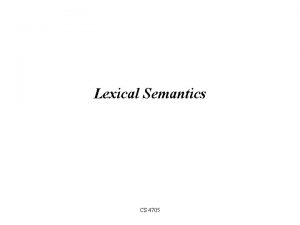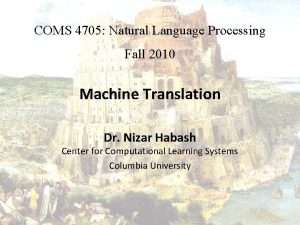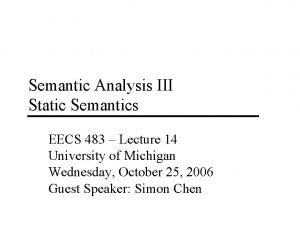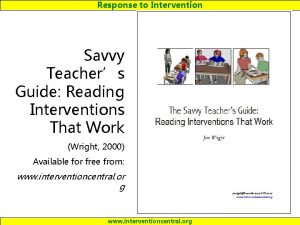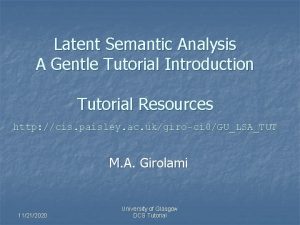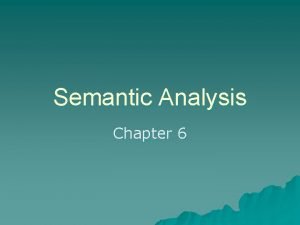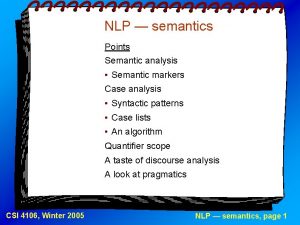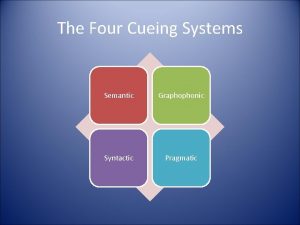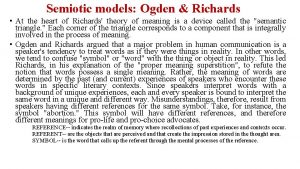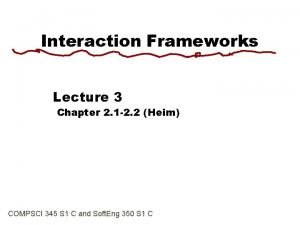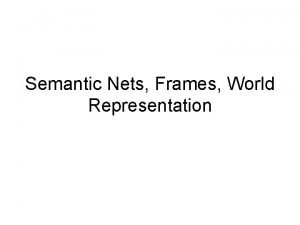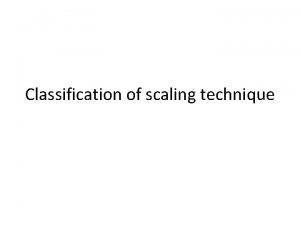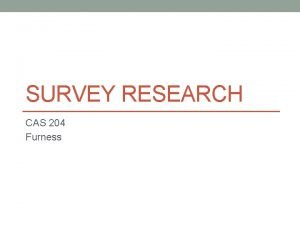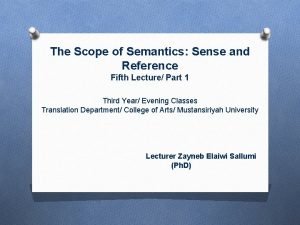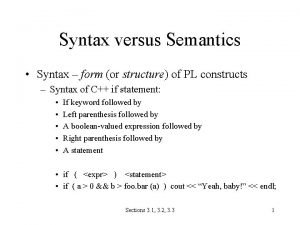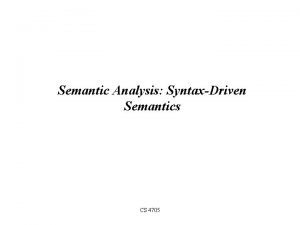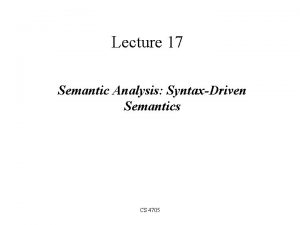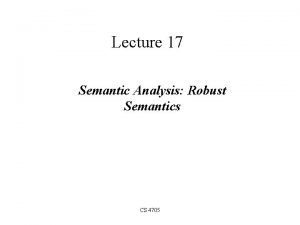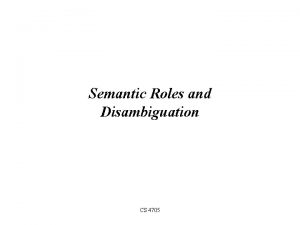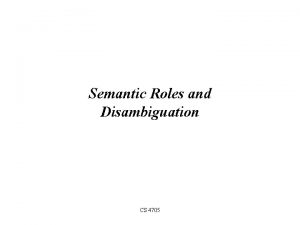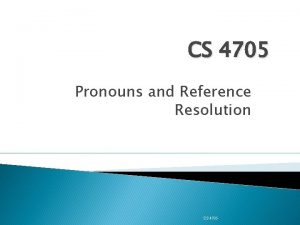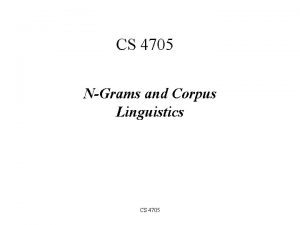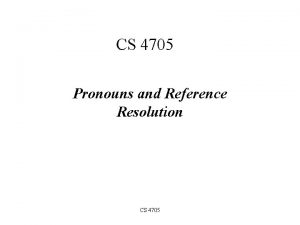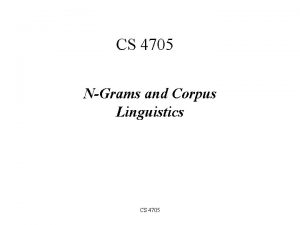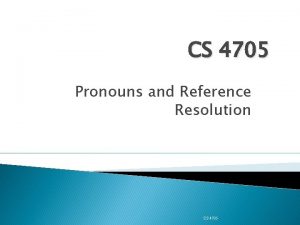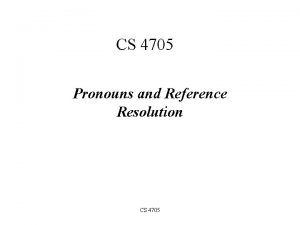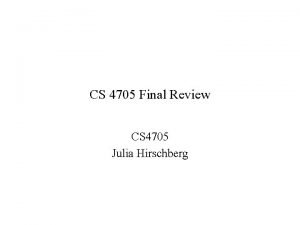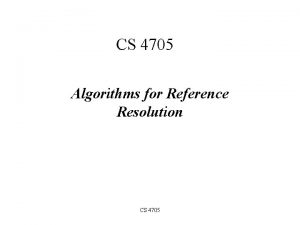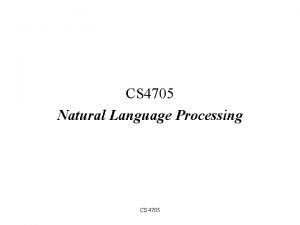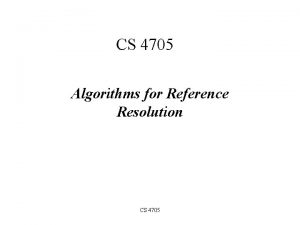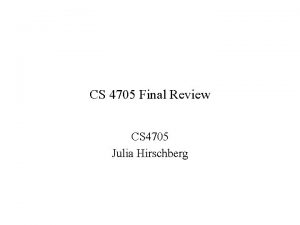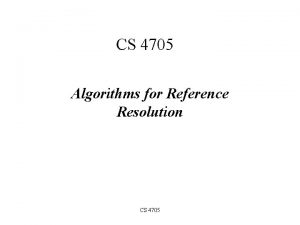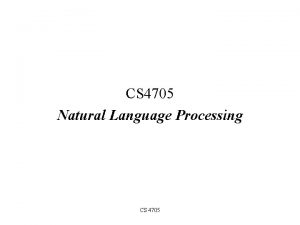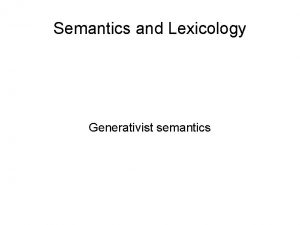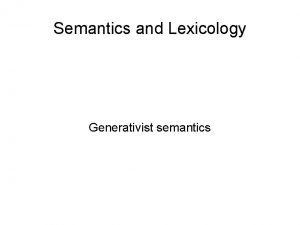Semantic Analysis SyntaxDriven Semantics CS 4705 Semantics and

























- Slides: 25

Semantic Analysis: Syntax-Driven Semantics CS 4705

Semantics and Syntax • Some representations of meaning: The cat howls at the moon. – Logic: howl(cat, moon) – Frames: Event: howling Agent: cat Patient: moon • What shall we represent? – Entities, categories, events, time, aspect – Predicates, arguments (constants, variables) – And…quantifiers, operators (e. g. temporal) • How do we compute such representations from a Natural Language sentence?

Compositional Semantics • Assumption: The meaning of the whole is comprised of the meaning of its parts – George cooks. Dan eats. Dan is sick. – cook(George) eat(Dan) sick(Dan) – George cooks and Dan eats cook(George) ^ eat(Dan) – George cooks or Dan is sick. cook(George) v sick(Dan) – If George cooks, Dan is sick cook(George) sick(Dan) or ~cook(George) v sick(Dan)

– If George cooks and Dan eats, Dan will get sick. (cook(George) ^ eat(Dan)) sick(Dan) cook(George) ^ eat(Dan) ? ? Dan only gets sick when George cooks. You can have apple juice or orange juice. Mary got married and had a baby. George cooks but Dan eats. George cooks and eats Dan.

Meaning derives from – The entities and actions/states represented (predicates and arguments, or, nouns and verbs) – The way they are ordered and related: • The syntax of the representation may correspond to the syntax of the sentence • Can we develop a mapping between syntactic representations and formal representations of meaning?

Syntax-Driven Semantics S NP VP eat(Dan) Nom V N Dan eats • Goal: Link syntactic structures to corresponding semantic representation to produce representation of the ‘meaning’ of a sentence while parsing it

Specific vs. General-Purpose Rules • Don’t want to have to specify for every possible parse tree what semantic representation it maps to • Do want to identify general mappings from parse trees to semantic representations • One way: – Augment the lexicon and the grammar – Devise mapping between rules of the grammar and rules of semantic representation – Rule-to-Rule Hypothesis: such a mapping exists

Semantic Attachment • Extend every grammar rule with `instructions’ on how to map components of rule to a semantic representation, e. g. S NP VP {VP. sem(NP. sem)} • Each semantic function defined in terms of the semantic representation of choice • Problem: how to define semantic functions and how to specify their composition so we always get the `right’ meaning representation from the grammar

A Simple Example: Mc. Donalds serves burgers. • Associating constants with constituents – Proper. Noun Mc. Donalds {Mc. Donalds} – Plural. Noun burgers {burgers} • Defining functions to produce these from input – NP Proper. Noun {Proper. Noun. sem} – NP Plural. Noun {Plural. Noun. sem} – Assumption: meaning representations of children are passed up to parents for nonbranching constituents • But…verbs are where the action is

– V serves {E(e, x, y) (Isa(e, Serving) ^ Server(e, x) ^ Served(e, y))} where e = event, x = agent, y = patient – Will every verb needs its own distinct representation? • Mc. Donalds hires students. • Mc. Donalds gave customers a bonus. • Predicate(Agent, Patient, Beneficiary)

Composing Semantic Constituents • Once we have the semantics for each constituent, how do we combine them? – VP V NP {V. sem(NP. sem)} – Goal for VP semantics of ‘serve’: E(e, x) (Isa(e, Serving) ^ Server(e, x) ^ Served(e, Meat)) – VP. sem must tell us • Which variables to be replaced by which arguments • How is replacement accomplished?

Lambda Notation • Extension to First Order Predicate Calculus λ x P(x): λ + variable(s) + FOPC expression in those variables • Lambda binding • Apply lambda-expression to logical terms to bind lambda-expression’s parameters to terms (lambda reduction) • Simple process: substitute terms for variables in lambda expression x. P(x)(car) P(car)

An Example • Parameter list in lambda expression makes variables within body of logical expression available for binding to external arguments provided by semantics of other constituents – Lambda reduction implements replacement • So, for V serves {V. sem(NP. sem)} with target {E(e, x, y) (Isa(e, Serving) ^ Server(e, y) ^ Served(e, x))} becomes { x E(e, y) (Isa(e, Serving) ^ Server(e, y) ^ Served(e, x))} – Now ‘x’ available to be bound when V. sem is applied to NP. sem of direct object

– application binds x to value of NP. sem (burgers) – -reduction replaces x within -expression with burgers – V. sem becomes {E(e, y) (Isa(e, Serving) ^ Server(e, y) ^ Served(e, burgers))} • Now need semantic attachment for S NP VP {VP. sem(NP. sem)} to add subject NP (Mc. Donalds) to semantic representation of Mc. Donalds serves burgers – We need another -expression in V. sem so the subject NP can be bound later (in VP. sem) – So… V serves { x y E(e) (Isa(e, Serving) ^ Server(e, y) ^ Served(e, x))}

– After lambda-reduction, value of V. sem(NP. sem) for serve will be { y E(e) (Isa(e, Serving) ^ Server(e, y) ^ Served(e, burgers))} • VP V NP {V. sem(NP. sem)} binds outer expression to the object NP (burgers) but leaves inner -expression for later binding to subject NP when semantics of S determined • S NP VP {VP. sem(NP. sem)} { y E(e) Isa(e, Serving) ^ Server(e, y) ^ Served(e, burgers)}(Mc. Donald’s) Result after lambda binding: {E(e) Isa(e, Serving) ^ Server(e, Mc. Donald’s) ^ Served(e, burgers)}

But this is just the tip of the iceberg…. • Terms can be complex A restaurant serves burgers. – ‘a restaurant’: E x Isa(x, restaurant) – E e Isa(e, Serving) ^ Server(e, <E x Isa(x, restaurant)>) ^ Served(e, burgers) – Allows quantified expressions to appear where terms can by providing rules to turn them into well-formed FOPC expressions • Issues of quantifier scope Every restaurant serves every burger.


How represent other constituents? • Adjective phrases: • Happy people, cheap food, purple socks • Intersective semantics works for some… Nom Adj Nom { x (Nom. sem(x) ^ Isa(x, Adj. sem))} Adj cheap {Cheap} x Isa(x, Food) ^ Isa(x, Cheap) But…. fake gun? Local restaurant? Former friend? Would-be singer? Ex Isa(x, Gun) ^ Isa(x, Fake)

Doing Compositional Semantics • To incorporate semantics into grammar we must – Determine `right’ representation for each basic constituent – Determine `right’ representation constituents that take these basic constituents as arguments – Result: set of function-like semantic attachments to incorporate into CFG E. g. Nom Adj Nom { x Nom. sem(x) ^ Isa(x, Adj. sem)}

Parsing with Semantic Attachments • Modify parser to include operations on semantic attachments as well as syntactic constituents – E. g. , change an Early-style parser so when constituents (dot at the end of the rule) are completed, their attached semantic function is applied and a meaning representation created and stored with state • Or… let parser run to completion and then walk through resulting tree, applying semantic attachments from bottom-up

Option 1 (Integrated Semantic Analysis) S NP VP {VP. sem(NP. sem)} – VP. sem has been stored in state representing VP – NP. sem stored with the state for NP – When rule completed, retrieve value of VP. sem and of NP. sem, and apply VP. sem to NP. sem – Store result in S. sem. • As fragments of input parsed, semantic fragments created • Can be used to block ambiguous representations

Drawback • You also perform semantic analysis on orphaned constituents that play no role in final parse • Case for pipelined approach: Do semantics after syntactic parse

Non-Compositional Language • Some meaning isn’t compositional – Non-compositional modifiers: fake, former, local, socalled, putative, apparent, … – Metaphor: • You’re the cream in my coffee. She’s the cream in George’s coffee. • The break-in was just the tip of the iceberg. This was only the tip of Shirley’s iceberg. – Idiom: • The old man finally kicked the bucket. The old man finally kicked the proverbial bucket. – Deferred reference: The ham sandwich wants his check. • Solution: special rules?

Summing Up • Hypothesis: Principle of Compositionality – Semantics of NL sentences and phrases can be composed from the semantics of their subparts • Rules can be derived which map syntactic analysis to semantic representation (Rule-to-Rule Hypothesis) – Lambda notation provides a way to extend FOPC to this end – But coming up with rule 2 rule mappings is hard • Idioms, metaphors makes things even harder

Next • Midterm on Thursday: Study hard and good luck!
 4705 in word
4705 in word Today meaning
Today meaning Coms 4705
Coms 4705 Compare procedural semantics and declarative semantics.
Compare procedural semantics and declarative semantics. Eecs 483
Eecs 483 Semantic feature analysis example
Semantic feature analysis example Latent semantic indexing tutorial
Latent semantic indexing tutorial Semantic analysis compiler
Semantic analysis compiler Static semantic analysis
Static semantic analysis Semantic marker
Semantic marker Semantic analysis definition
Semantic analysis definition Semantic field exercise
Semantic field exercise Graphophonic definition
Graphophonic definition Communicative translation vs semantic translation
Communicative translation vs semantic translation Semantic noise meaning
Semantic noise meaning Ogden and richards triangle of meaning
Ogden and richards triangle of meaning Types of semantics
Types of semantics Abowd and beale framework examples
Abowd and beale framework examples What is semantics features
What is semantics features Semantic nets and frames
Semantic nets and frames Data integration with xml and semantic web technologies
Data integration with xml and semantic web technologies Scale classification
Scale classification Advantages and disadvantages of sample survey
Advantages and disadvantages of sample survey Semantic and communicative translation
Semantic and communicative translation Scope of semantic
Scope of semantic Semantics vs syntax
Semantics vs syntax

